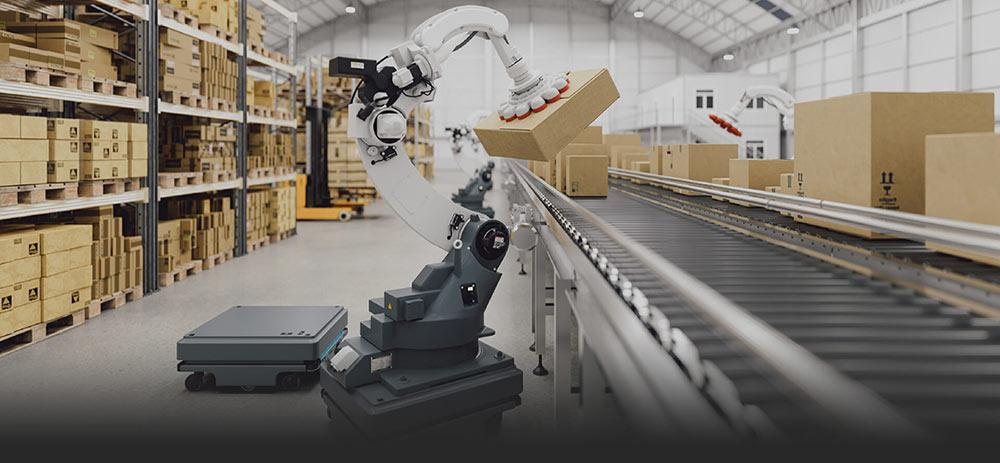The warehouse automation market is experiencing a period of extraordinary growth and innovation, driven by technological advancements, evolving consumer expectations, and increased pressure on supply chain efficiency. As global commerce accelerates and the need for streamlined logistics intensifies, warehouse automation has emerged as a pivotal element of modern supply chain strategies.
Valued at around $22 billion in 2024, the warehouse automation market is projected to grow at a compound annual growth rate (CAGR) exceeding 14%, potentially reaching over $60 billion by 2030. This growth trajectory signals a major shift in warehouse operations across industries, highlighting a dynamic mix of opportunities, competitive forces, and emerging challenges.
Market Segmentation Overview
A thorough analysis of the warehouse automation market requires a look at key segmentation criteria: by component, function, industry, and region.
By Component:
-
Hardware (robots, conveyors, sorters, automated storage and retrieval systems)
-
Software (warehouse management systems, control systems, analytics platforms)
-
Services (maintenance, training, integration)
Hardware continues to dominate the market in terms of revenue, but software and services are growing rapidly, especially with the increasing need for predictive analytics, system optimization, and real-time data integration.
By Function:
-
Inventory and storage management
-
Picking and sorting
-
Packaging
-
Transportation and material movement
Inventory and storage automation remains the largest functional segment, while picking and sorting automation is gaining momentum due to the rise in e-commerce and the complexity of order profiles.
By Industry:
-
Retail and E-commerce
-
Food and Beverage
-
Pharmaceuticals
-
Automotive
-
Third-party logistics (3PL)
Retail and e-commerce lead the way, fueled by the boom in online shopping and omnichannel fulfillment needs. However, sectors such as pharmaceuticals and food & beverage are quickly embracing automation to ensure accuracy, compliance, and speed.
Key Market Drivers
Several key factors are driving the warehouse automation market forward:
-
E-commerce Acceleration: Consumers increasingly expect fast, accurate, and low-cost deliveries. Automation helps warehouses meet these demands by improving order processing speed, accuracy, and fulfillment scalability.
-
Labor Market Pressures: Labor shortages, rising wages, and high employee turnover rates in warehousing are pushing companies to adopt automation. Robots and automated systems can operate 24/7, reduce injury risks, and complement human workers.
-
Technological Innovation: Advances in robotics, artificial intelligence (AI), machine learning, and the Internet of Things (IoT) are making automation systems more intelligent, adaptable, and cost-effective.
-
Need for Operational Efficiency: With supply chains becoming more complex, companies are focusing on reducing costs, minimizing errors, and enhancing flexibility—objectives that automation directly supports.
-
Rise of Smart Warehouses: Integration of cloud-based warehouse management systems, real-time analytics, and connected devices is leading to the development of intelligent, data-driven warehouse environments.
Regional Market Landscape
-
North America: A mature market with strong adoption across retail, logistics, and manufacturing. The U.S. leads in innovation and implementation, particularly in high-tech and large-scale distribution centers.
-
Europe: Focuses on sustainability, energy efficiency, and worker safety. Countries like Germany and the Netherlands are leading adopters.
-
Asia-Pacific: The fastest-growing region, driven by rapid e-commerce expansion in China, India, Japan, and Southeast Asia. Government support for digital infrastructure and smart logistics is also playing a key role.
-
Latin America and the Middle East: Emerging markets where automation adoption is rising gradually, often led by multinational firms and logistics providers expanding their footprint.
Competitive Landscape
The warehouse automation industry is highly competitive and fragmented. Major players include:
-
Dematic
-
Daifuku
-
Honeywell Intelligrated
-
Swisslog (KUKA Group)
-
GreyOrange
-
Zebra Technologies
-
Knapp AG
-
ABB
Startups and niche technology providers are also contributing to innovation, particularly in AI, computer vision, and autonomous robotics. Strategic partnerships, mergers, and acquisitions are common as firms aim to offer comprehensive end-to-end automation solutions.
Challenges and Restraints
Despite the rapid growth, several challenges continue to impact market expansion:
-
High Initial Capital Investment: Cost is a major barrier, especially for small and mid-sized enterprises. Although long-term ROI is often positive, upfront expenses can deter adoption.
-
Integration Complexity: Many warehouses operate with legacy systems, making integration with modern automation tools technically demanding and costly.
-
Cybersecurity Risks: As warehouses become more connected, they also become more vulnerable to cyber threats. Ensuring data security and system integrity is crucial.
-
Workforce Transition: The shift toward automation raises concerns about job displacement and the need for upskilling existing staff to manage and maintain new systems.
Future Outlook and Opportunities
Looking ahead, the warehouse automation market is expected to evolve with even more intelligent, flexible, and collaborative solutions. Key trends that will shape the future include:
-
Increased use of autonomous mobile robots (AMRs)
-
Expansion of AI and machine learning for predictive operations
-
Growth in software-defined warehousing
-
Sustainability-focused automation solutions
-
Proliferation of cloud-based management systems
Companies that prioritize automation as part of a broader digital transformation strategy will be best positioned to capitalize on these trends.
Conclusion
The warehouse automation market is on a growth trajectory that shows no sign of slowing down. As companies navigate an increasingly complex logistics landscape, automation offers a clear path to improved efficiency, reduced operational costs, and enhanced customer satisfaction. For businesses seeking a competitive edge in the age of digital supply chains, investing in warehouse automation is not just smart it’s essential.



